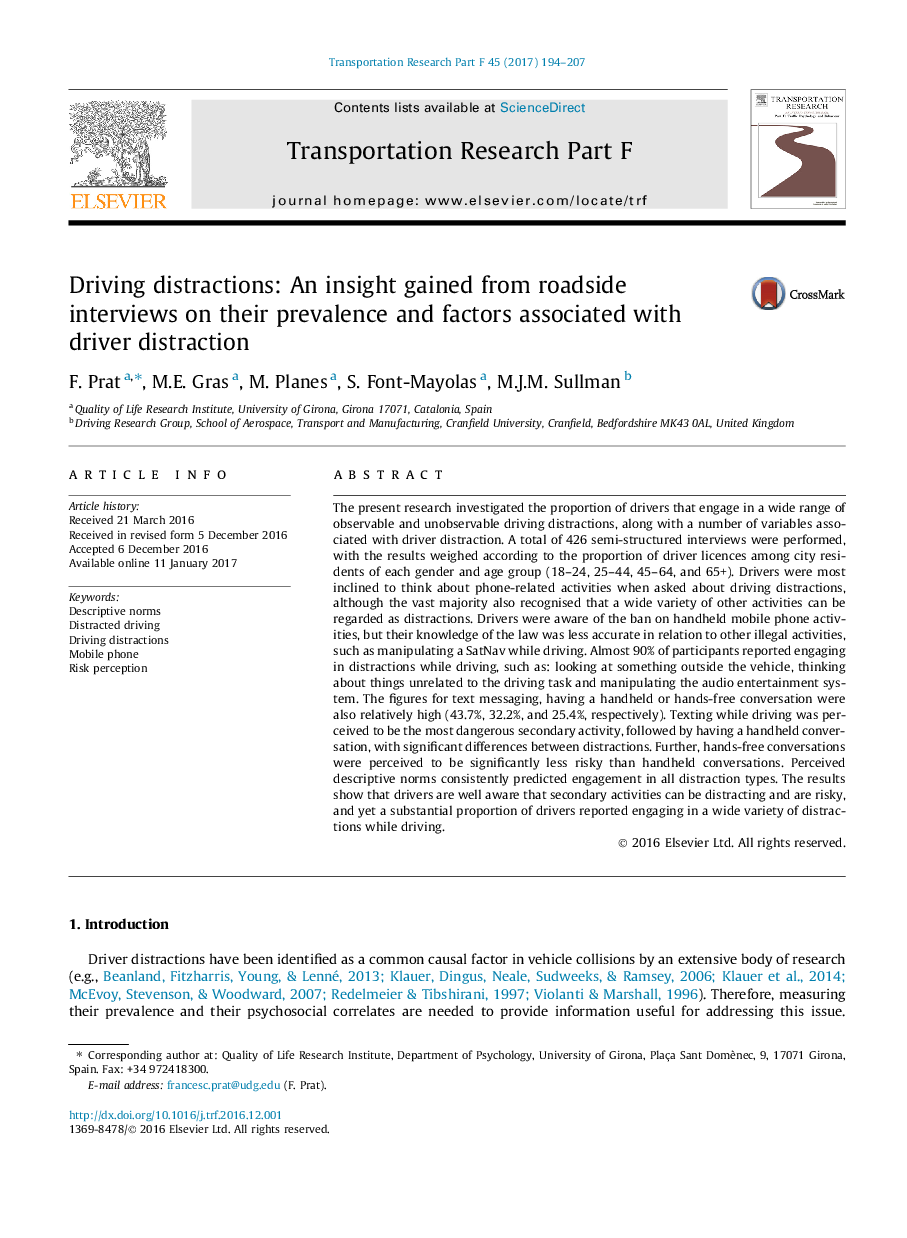| کد مقاله | کد نشریه | سال انتشار | مقاله انگلیسی | نسخه تمام متن |
|---|---|---|---|---|
| 5037330 | 1472440 | 2017 | 14 صفحه PDF | دانلود رایگان |
- Drivers tend to think about mobile phone use when asked about distracted driving.
- Almost a third of drivers (32.2%) reported handheld conversations and 43.7% text messaging.
- Over 90% reported being distracted by looking at something and by their thoughts.
- Text messaging while driving was perceived to be the riskiest secondary task.
- Perceived descriptive norms reliably predicted engagement in all distraction types.
The present research investigated the proportion of drivers that engage in a wide range of observable and unobservable driving distractions, along with a number of variables associated with driver distraction. A total of 426 semi-structured interviews were performed, with the results weighed according to the proportion of driver licences among city residents of each gender and age group (18-24, 25-44, 45-64, and 65+). Drivers were most inclined to think about phone-related activities when asked about driving distractions, although the vast majority also recognised that a wide variety of other activities can be regarded as distractions. Drivers were aware of the ban on handheld mobile phone activities, but their knowledge of the law was less accurate in relation to other illegal activities, such as manipulating a SatNav while driving. Almost 90% of participants reported engaging in distractions while driving, such as: looking at something outside the vehicle, thinking about things unrelated to the driving task and manipulating the audio entertainment system. The figures for text messaging, having a handheld or hands-free conversation were also relatively high (43.7%, 32.2%, and 25.4%, respectively). Texting while driving was perceived to be the most dangerous secondary activity, followed by having a handheld conversation, with significant differences between distractions. Further, hands-free conversations were perceived to be significantly less risky than handheld conversations. Perceived descriptive norms consistently predicted engagement in all distraction types. The results show that drivers are well aware that secondary activities can be distracting and are risky, and yet a substantial proportion of drivers reported engaging in a wide variety of distractions while driving.
Journal: Transportation Research Part F: Traffic Psychology and Behaviour - Volume 45, February 2017, Pages 194-207
